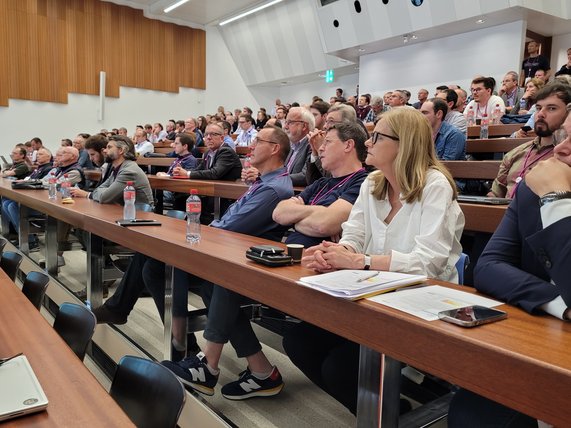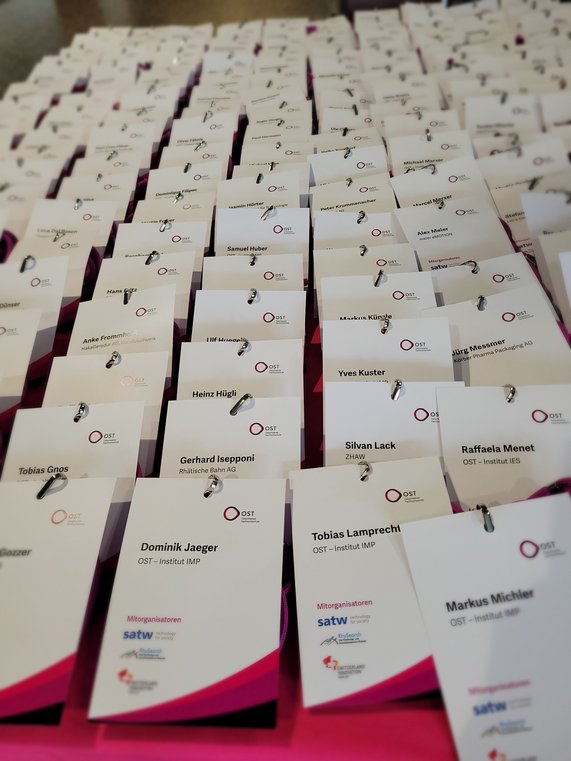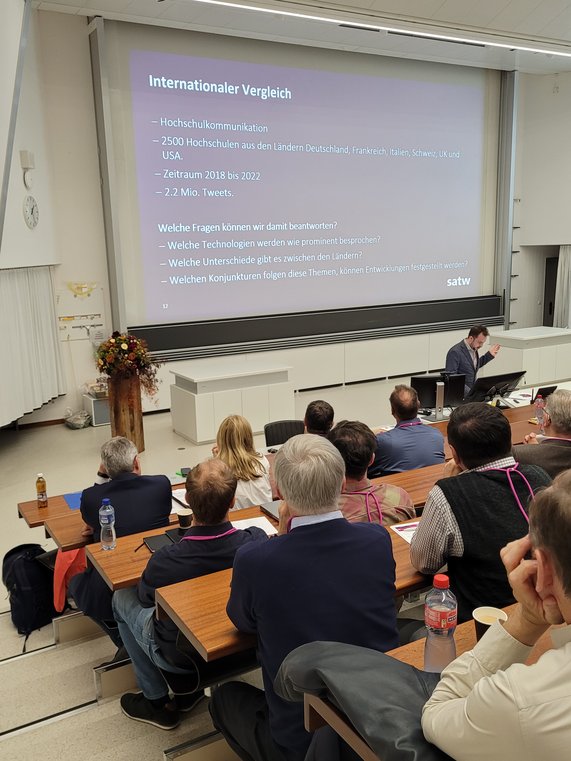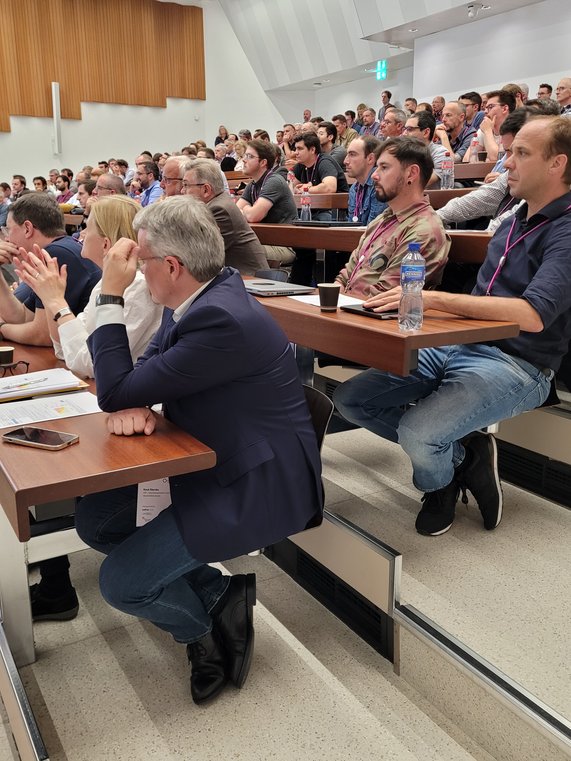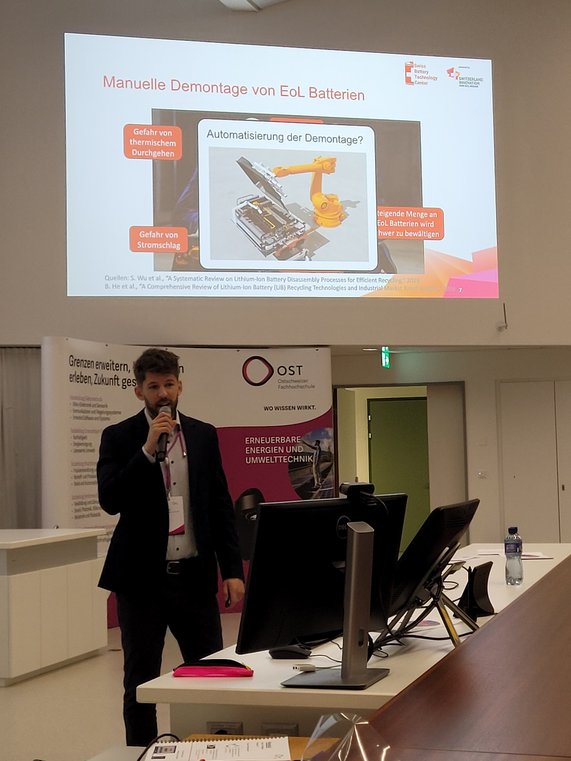Translated with DeepL
The Department of Technology at OST, Rhysearch, SATW and the Switzerland Innovation Park East joined forces for the first time to jointly organise the Technology Day'24. The annual event enjoys a high regional profile. The summary provides an example of what foresight, as practised by the SATW, actually aims to achieve.
Knut Siercks, Head of the Department of Technology OST, welcomed the 200 or so participants from science, industry and related fields. Claudia Schärer and Stefan Scheidegger, who form the SATW's Foresight Team, then gave a tour d'horizon of the technologies that will characterise research and industry in the coming years. Their presentation focussed on three topics from the Technology Outlook: national trends, international trends and showcases.
In parallel technology sessions on topics such as advanced manufacturing, sensor technology, artificial intelligence and sustainability, the participants discussed specific research and development projects from science and industry together with the experts.
Finally, Mirko Kovac, professor at Empa, Imperial College London and soon also at EPFL, gave a brilliant keynote speech on the contribution robotics can make to a more sustainable society. This will be achieved if robotics learns to draw on nature, i.e. becomes bio-inspired.
Foresight lays the foundations for analysing the future - it is like a travel guide and helps to identify trends, topics and focal points. Travel guides provide points of reference for further research and briefly explain what sights mean and how they relate to other sights. However, the altitude remains high. Everyone has to travel for themselves: If you want to use the insights gained from studying the future for yourself or an organisation, you have to immerse yourself in the respective specialist areas, ask yourself what the trends described there could mean for your own area and even set priorities. Choose from various subject areas and look at specific applications. As the Technology Day demonstrated in the sessions.
It is just as important that after dealing with the supposedly trivial details, the perspective is opened up again, as Mirko Kovac did in his keynote speech. If you want to utilise the vague answers to the question of where the journey is going, you need a perspective and a goal in order to take the first step.
A day like the Technology Day with 200 participants cannot be summarised in a few lines. There was too much content, too many topics, too many conversations over drinks and during the break. After all, networking among people, sharing experiences, thinking outside the box is the beginning of many an idea and of many journeys.

